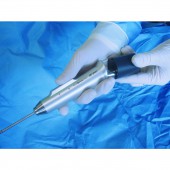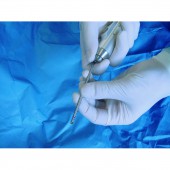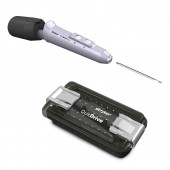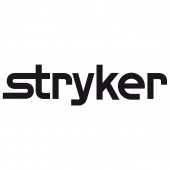Stryker Quik Drive Battery Powered Screwdriver by Erdmann Design |
Home > Winners > #54097 |
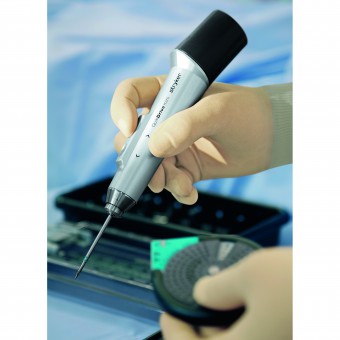 |
|
||||
| DESIGN DETAILS | |||||
| DESIGN NAME: Stryker Quik Drive PRIMARY FUNCTION: Battery Powered Screwdriver INSPIRATION: A handheld surgical instrument needs to be ergonomically opimized at its best. The QuikDrive is an instrument that is held in the so called pencil grip or precision grip. We studied numerous products that are handled in the same way and developed design concepts that we verified with different surgeon in order to gather feedback and further design input. Shape studies where based on Human Scale documents. UNIQUE PROPERTIES / PROJECT DESCRIPTION: The battery powered screwdriver QuikDrive was developed for use in neuro-, craniomaxillofacial and hand surgery. This optimally balanced instrument enables the surgeon to insert and remove the smallest Stryker implant screws with a diameter of 1,2 to 2 mm. The reduced pencil-shaped form is tapered at the tip allowing the surgeon free vision within the operating area, freedom of movement and a very precise mode of operation in difficult applications. OPERATION / FLOW / INTERACTION: The operator guides the instrument with two buttons (forward and backwards motion), which function as force sensors. Rotation speed and power are regulated by finger pressure providing optimal sensory feedback for the screw’s torque.The surface texture of the instrument’s casing was optimized for use with rubber gloves soiled during surgery. Simple operation and the self-fixing insertion of the drill or screwdriver provide for high ergonomic procedure. PROJECT DURATION AND LOCATION: The project started in Mai 2005 and finished in August 2007 FITS BEST INTO CATEGORY: Medical Devices and Medical Equipment Design |
PRODUCTION / REALIZATION TECHNOLOGY: Milled aluminum parts, anodized Injection molded battery pack SPECIFICATIONS / TECHNICAL PROPERTIES: Width 50mm x Depth 45mm x Length 190mm Weight approx. 400g TAGS: human centered design, usability testing, experience design, industrial design, battery powered screwdriver, microsurgery RESEARCH ABSTRACT: A lot of time and effort was invested in researching and developing a button technology that provides variable speed control and forward-reverse capabilities. Mechnical engineering was challenged to develop a solution that sustains many sterilization cycles. CHALLENGE: The development aimed for an ergonomically balanced tool for left and right hand use what created challenges in finding the ideal integration of the buttons and and making sure the tool did not end up being to long. ADDED DATE: 2017-02-20 15:16:28 TEAM MEMBERS (2) : Raimund Erdmann and Peter Hess IMAGE CREDITS: Erdmann Design |
||||
| Visit the following page to learn more: http://www.stryker.com/en-us/corporate/A |
|||||
| AWARD DETAILS | |
 |
Stryker Quik Drive Battery Powered Screwdriver by Erdmann Design is Winner in Medical Devices and Medical Equipment Design Category, 2016 - 2017.· Read the interview with designer Erdmann Design for design Stryker Quik Drive here.· Press Members: Login or Register to request an exclusive interview with Erdmann Design. · Click here to register inorder to view the profile and other works by Erdmann Design. |
| SOCIAL |
| + Add to Likes / Favorites | Send to My Email | Comment | Testimonials | View Press-Release | Press Kit |
Did you like Erdmann Design's Medical Product Design?
You will most likely enjoy other award winning medical product design as well.
Click here to view more Award Winning Medical Product Design.


